While I continue to wait for all the parts I need to complete some upgrades while I have Sharka’s head off, I thought I’d do a quick review of the tool that made it all possible. This is the Mityvac MV4560 “Cooling System Pressure Test Kit.” And it’s a beauty.
I bought this tool totally cold, not based on any friend’s recommendation or anything. I googled for a pressure tester and found this little guy on amazon. It had great reviews, it was less than half the price of the nearest competing tool, and it was available for shipping that day. So I bought. 35 bucks and a few days later (and free shipping), I had a pressure tester in my hands. Minutes after that, I’d diagnosed Sharka’s head gasket to be bad.
Bucky, my emerald green NB, is acting as the test subject for the above shots. Sharka is in pieces and his radiator is… hmm. I don’t know where it is off the top of my head. It’s not in any position to hold pressure at the moment anyway.
So this is all you do. You fit the correct cap to your radiator and you pump up the little gun. To get it up to pressure requires fewer than 10 pumps, more like 5-6. You’re supposed to pump it up to the top of the colored pressure range on the gauge and see if it leaks down (I didn’t do that for this stunt photo because the instructions slipped my mind). You do this with a cold engine. If it leaks down, you check all around the engine for coolant leaks. If none are found, the Mityvac has instructions for testing with the engine running and then with the engine running and up to operating temperature.
In Sharka’s case, 1 psi of pressure was lost over the course of a few minutes. A verrrry slow leak. And no coolant could be found anywhere around the motor, so I went on to the running and hot tests. With the engine running, the pressure on the gauge immediately rose a couple pounds over a few seconds. And with the engine hot and being revved, I was rewarded with a fluttering needle on the tester. The cooling system was clearly being pressurized by a piston.
The Mityvac has one more trick up its sleeve. It has a couple of little blue adapters that you can screw your radiator cap into. Then you just screw the yellow cap onto the other end and pump the trigger to pressurize the cap. If the cap loses pressure early, you have a bad one. No guessing or saying “eh, that cap looks pretty old….” and throwing out a perfectly good cap. I confess, while trying to find the source of Sharka’s water leak, I bought 3 radiator caps from various sources. I think all of them nearly equaled the $35 I spent on this Mityvac.
So, this is a great little tool. It’s all plastic, but it seems like a quality tool. And it has the little trigger pump, which is apparently unpopular with a pressure tester like this, but it really does not require much pumping to make work. And it was not expensive! And, most importantly, it works. Sadly, I can’t say that about every tool I’ve ever acquired.

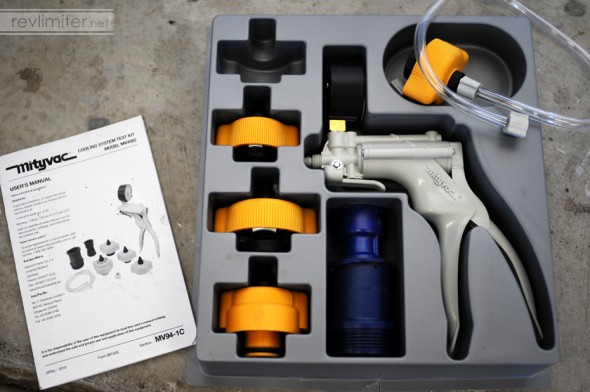
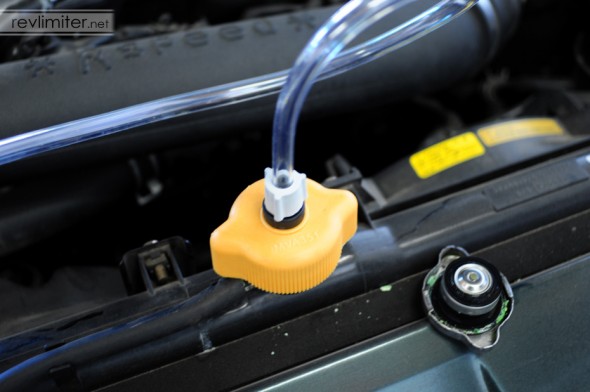
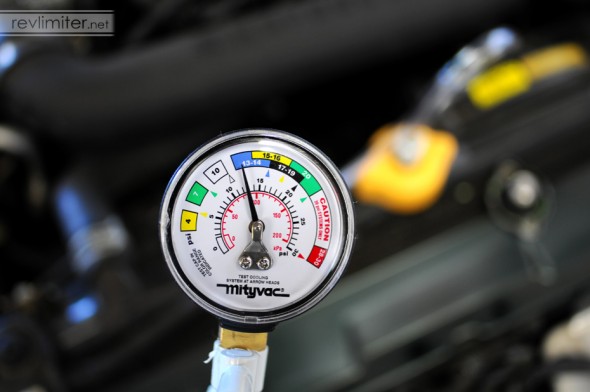
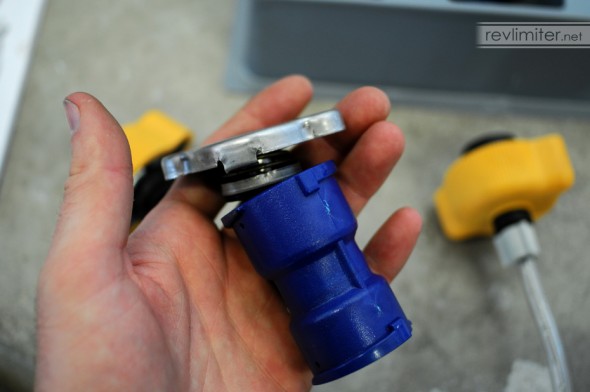
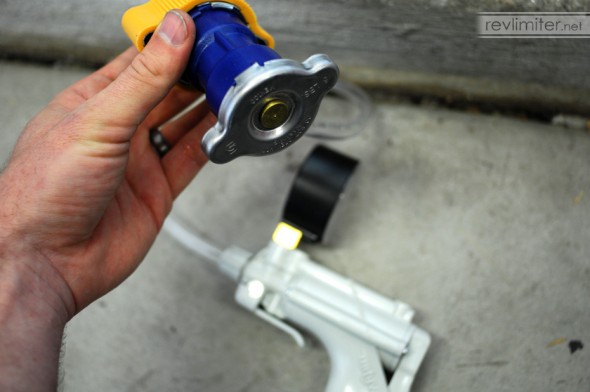
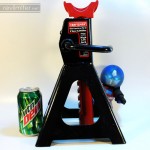

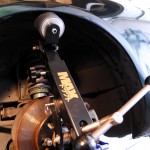


I guess I might have to “pull the trigger” and pickup one of these testers, good review.
HA! Nice pun. Good luck with yours!
Thank you for this great independent review. We’re thrilled at Mityvac to make important diagnostic products like the MV4560 affordable to a wider market of users. Your input is greatly appreciated.
My pleasure! Thank YOU for making such a great coolant tester.